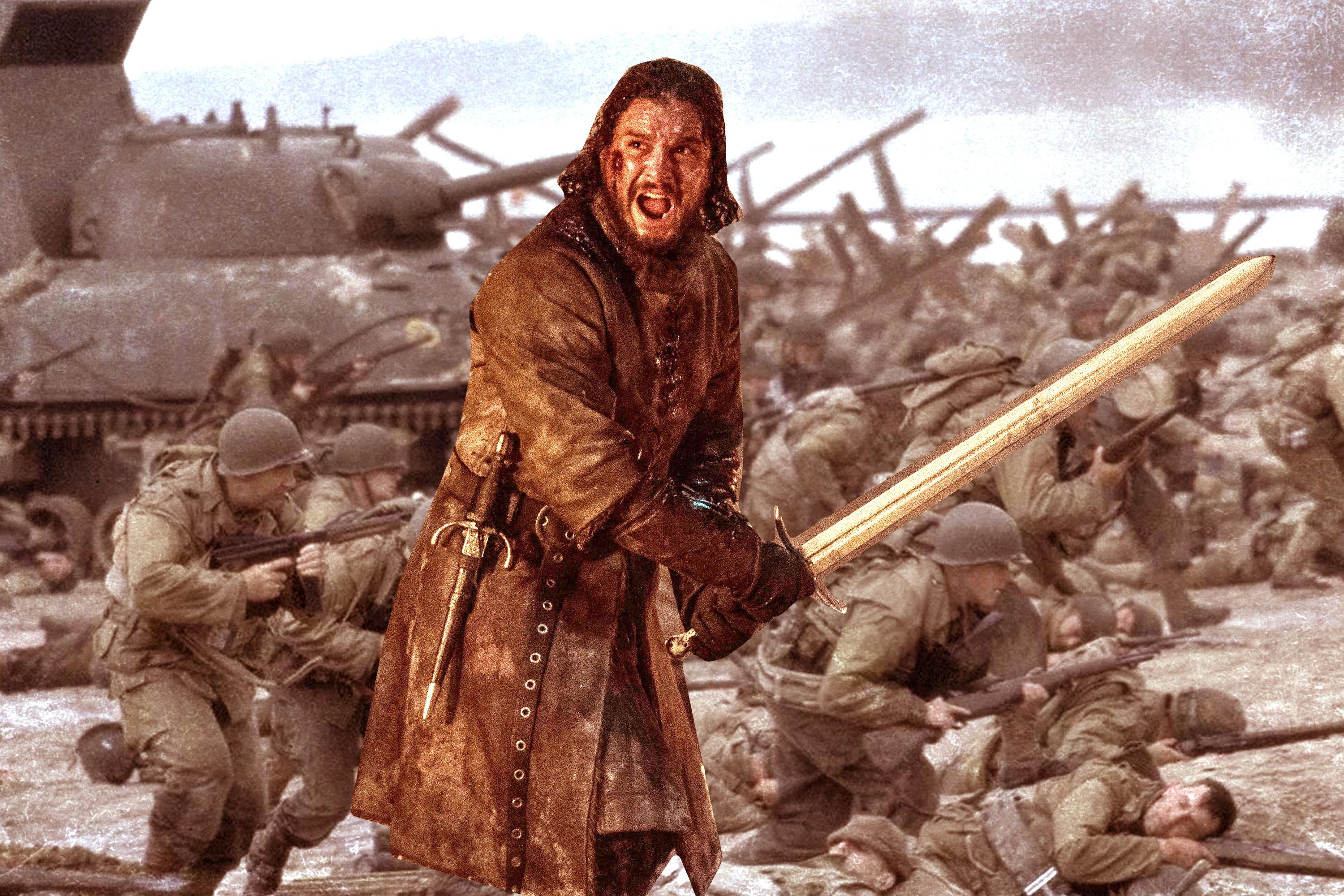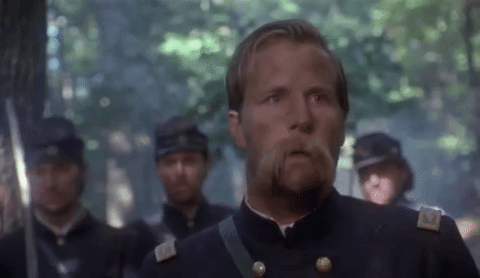
This past weekend featured two of the biggest, flashiest, and most expensive battles ever committed to the small and big screens. Both the final battle with Thanos in Avengers: Endgame and the Battle of Winterfell on Game of Thrones drew millions of eyeballs, but were they … good? Maybe. But here are the movie and television battles that Ringer staffers believe to be the best of all time.
The Battle of Helm’s Deep, The Lord of the Rings: The Two Towers
Andrew Gruttadaro: Heading into “The Long Night,” Game of Thrones director Miguel Sapochnik admitted that the Battle of Helm’s Deep in The Lord of the Rings: The Two Towers was an inspiration—and watching the episode Sunday night, some comparisons were easy to make. Both battles feature a large swath of civilization holing up in a castle and preparing to make a final stand against a daunting, more powerful army of dead-looking things. Both battles are so epic in scale that they jump from vignette to vignette, zooming in and out in order to raise tension and maintain perspective. Both end with the good guys winning thanks to some late-game heroics.
But the Battle of Helm’s Deep has many things that the Battle of Winterfell does not: a manageable sense of place and time; a more realistic set of consequences; good lighting; Legolas surfing down stairs on a shield while sniping orcs; moments in which courage and resolve are truly tested. And also interspersing scenes of giant trees raiding Isengard. It is the standard-bearer, the battle that every following battle is judged against. It is everything that was good about the Battle of Winterfell—and also everything that the Battle of Winterfell was not.
Do Lung Bridge, Apocalypse Now
Miles Surrey: “You’re in the asshole of the world, Captain!” a lieutenant tells Captain Willard (Martin Sheen, who literally almost died filming this thing) when he arrives at Do Lung Bridge near the tail end of Apocalypse Now. Francis Ford Coppola’s titanic film captures the ill-fated hubris of American exceptionalism in Vietnam, and a maddening descent through Willard’s purview as the war’s endlessness becomes painfully clear.
The Sisyphean struggle is best illustrated in the Do Lung Bridge sequence, the final American outpost before Willard confronts the renegade Colonel Kurtz (fat Marlon Brando). It’s an inflection point between the actual war and the unfettered chaos that Kurtz has embraced—really, it’s leaning toward the latter, as none of the soldiers at Do Lung even know who’s in charge while they fire at unseen enemies in perpetuity. There are some great and super entertaining battle scenes on this list, but this psychedelic sequence from Apocalypse Now—and honestly you could throw in a couple of other examples, like the Ride of the Valkyries and Kurtz’s compound, to reach the same conclusion—highlights an undeniable truth. War is hell, and wherever it takes place, it’s certainly the asshole of the world.
Omaha Beach, Saving Private Ryan
Kate Knibbs: The 23-minute D-Day invasion scene at the beginning of Saving Private Ryan is not easy to watch—I may never sit through it again—and the reason it’s such tough viewing is also why it belongs on this list. Steven Spielberg’s high-budget depiction of Allied soldiers storming Omaha Beach is a slaughter both massive in scope and astonishing in its realism. You can see its influence in pretty much any modern battle sequence, from the grim, desaturated colors to the decision to film the soldiers at their own eye level instead of from above, which makes the audience feel immersed in the carnage. Capturing the chaos of war without confusing viewers is a tricky task, and Saving Private Ryan nails it. A properly hyped moment in film.
Asuka Langley Soryu vs. Evangelion Units 05-13, The End of Evangelion
Justin Charity: The coward Shinji Ikari once again refuses to fight. Rei Ayanami has gone missing. So Asuka Langley Soryu awakens from a coma, curled in the fetal position in her Evangelion’s dark cockpit, stranded at the bottom of a lake, sans backup, under heavy bombardment from the tanks, helicopters, and the naval cruiser swarming above her. She’s doomed. Humanity, too. The End of Evangelion thus compels Asuka—the angry, arrogant teen girl who pilots Evangelion Unit-02—to become her own deus ex machina. Through Asuka’s massively resurgent will, Unit-02 shoots up from the wet depths and heaves the naval cruiser into the air, blocking dozens of incoming missiles before hurling the ship against the lakeside tanks. Furiously, Asuka wipes out the treacherous Japanese forces only to find herself surrounded by nine white, winged Evangelion units circling over Tokyo-3. Unit-02 suffers severely limited battery life, which creates an unprecedented challenge for a lone pilot accustomed to confronting opponents one at a time. “Nine units in three and a half minutes,” Asuka calculates. “That’s 20 seconds each with time to spare!”
For once, Asuka’s arrogance serves her spectacularly well. If Neon Genesis Evangelion, the TV series, undermines the teen Evangelion pilots at every turn, affording them only narrow triumph over each angel, then The End of Evangelion finally affords one pilot—and the viewer—some long and orgasmic empowerment. Asuka tears across the Tokyo-3 geofront, hurling helicopters at other helicopters; tackling the winged Evas, splitting their skulls, stumbling between deadly swings of her reverberating sword as she cuts down the mass-produced Evangelion units one by one. It’s ballet, but a massacre. Each fatality is a masterpiece, including Asuka’s own demise. The Lance of Longinus replica hurdles across the horizon, shreds Asuka’s shield, impales her face, and thus crucifies the depleted Unit-02. The disfigured Evangelion units 05-13 resurrect themselves, huddle around Unit-02, and disembowel Asuka’s writhing Evangelion. Surprisingly, and rather tragically, Asuka loses. Her left eye pours pints of blood into her lap. She can only half-see the gorgeous carnage she’s wrought. I’ve relished the scene, with both eyes wide, a hundred times.
Little Round Top, Gettysburg
Michael Baumann: There are three things that make this battle work. The first is the scale—the whole Battle of Gettysburg took three days and involved almost 200,000 soldiers, but this is just one digestible slice. The second is the realism, made possible by on-location shooting at the actual site of the battle, and thousands of volunteer reenactors. The third is the stakes, made clear to both sides before the start of the fighting: General Hood’s division must take the hill or “we’ll need buckets to catch the lead,” while Colonel Chamberlain’s regiment must hold the line or the entire Union army will be flanked.
Colonel Chamberlain, played by Jeff Daniels, is the hero of the battle, an idealistic college professor turned volunteer officer more at home giving maudlin speeches about the purpose of the war than fighting it. His regiment had lost two-thirds of its original strength over the previous year, and by repulsing attack after attack, they’ve lost almost two-thirds of their remaining 300 men in the course of an afternoon, and are out of ammunition. The film’s finale, Pickett’s Charge, is a grander set piece, but Little Round Top resonates more because of how close the battle comes to being lost. Chamberlain, the soft-spoken academic, is so desperate by battle’s end that he orders his troops to charge down the hill and fight the Confederates hand to hand, eyes bugging out of his head as he gives the order.

The battle sequence is interminable, the scenery dark and choked with smoke, soldiers sitting or running in claustrophobic bunches, wearing head-to-toe dark wool in the middle of summer, drenched in sweat and covered in dirt. The counterattack on Little Round Top is one of the most famous tactical actions of the Civil War, if not all of American military history, and it won the real-life Chamberlain the Medal of Honor, but Daniels looks absolutely terrified. The entire time. War can be an instrument for social change, or a great adventure, but most of all, to quote another great Union general, war is hell.
The Battle of Edington, The Last Kingdom
Ben Lindbergh: Since HBO insists it isn’t TV, someone here has to stick up for the small screen. The Last Kingdom’s depiction of a pivotal battle between the Vikings and Saxons in 878 C.E. is suitably cinematic, but at least for the first five minutes, it’s not the typical orgy of open-field slashing that one would expect from a dramatized representation of a battle that took place in an age long before bullets. This is a bloody, brute-force slog in which winning means advancing one effortful foot at a time. The only way to triumph is not to give ground, and the only way not to give ground is to stay still and risk a random stab in the face.
This sequence from the series’ Season 1 finale succeeds in keeping the focus on characters amid the massive scrum, and the aerial shots are appropriately epic. Now, I’m no expert on early medieval warfare, but I’m not sure the shield wall would have endured as a dominant tactic for centuries if one really angry guy could undo it by vaulting over the front line and taking on an entire army from the rear. Even so, I appreciate the commitment to televising a large-scale battle that doesn’t follow the format we’re used to seeing.

